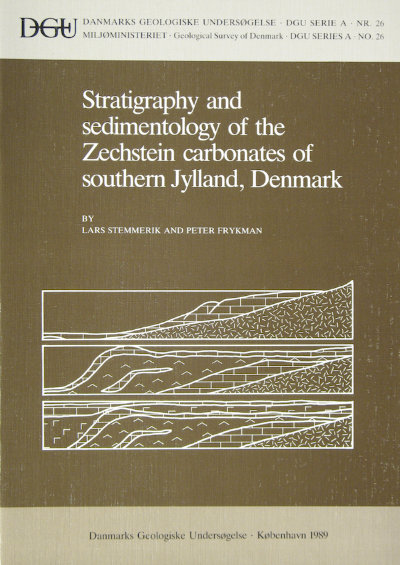Stratigraphy and sedimentology of the Zechstein carbonates of southern Jylland, Denmark
DOI:
https://doi.org/10.34194/seriea.v26.7046Keywords:
Zechstein, Denmark, Sedimentology, Stratigraphy, Evaporites, CarbonatesAbstract
The Upper Permian Zechstein succession of southern Jylland, Denmark, is composed of a cyclic repetition of carbonate, anhydrite and salt, and includes four main carbonate units: Ca-la, Ca-lb, Ca-2 and Ca-3. The stratigraphy and log-correlation in the southern Jylland area is outlined and compared to other areas. Descriptions of facies and interpretation of depositional models for the four carbonate units are presented. The depositional system comprised a shelf with marginal sabkha evaporites and carbonates; the shelf underwent evolution from a ramp-like to a platform configuration. This evolution is seen as the result of the interplay between evaporite and carbonate sedimentation. Accumulation of sulphate evaporites during Z-1 times produced a sediment body with a platform morphology. Z-2 carbonate deposition further enhanced the platform configuration, with consequent development of a marked zonation of facies according to energy level. Later in Z-2 time the platform - basin system suffered demise as the basinal areas were filled with halite and during the remaining period of basinal history shallow water conditions prevailed throughout the area.
Downloads
Published
Issue
Section
License
This article is distributed under a CC-BY 4.0 licence, permitting free redistribution and reproduction for any purpose, even commercial, provided proper citation of the original work. Author(s) retain copyright over the article contents.


